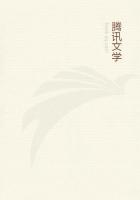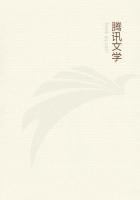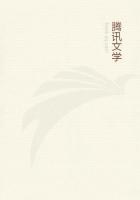So much cross-fertilized seed as the plant now produces and scatters through the grain fields may well fill the farmer's prosaic mind with despair.To him there is no glory in the scarlet of the poppy comparable with the glitter of a silver dollar; no charm in the heavenly blue of the corn-flower, that likewise preys upon the fertility of his soil; the vivid flecks of color with which the cockle lights up his fields mean only loss of productiveness in the earth that would yield him greater profit without them.Moreover, seeds of this so-called weed not only darken his wheat when they are threshed out together, but are positively injurious if swallowed in any quantity.Emerson said every plant is called a weed until its usefulness is discovered.Linnaeus called this flower Agrostemma = the crown-of-the-field.Agriculturalists never realize that beauty is in itself a sufficient plea for respected existence.Not a few of the cockle's relatives adorn men's gardens.
WILD PINK or CATCHFLY
(Silene Caroliniana; S.Pennsylvanica of Gray) Pink family Flowers - Rose pink, deep or very pale; about inch broad, on slender footstalks, in terminal clusters.Calyx tubular, 5-toothed, much enlarged in fruit, sticky; 5 petals with claws enclosed in calyx, wedged-shaped above, slightly notched.Stamens 10; pistil with 3 styles.Stem: 4 to 10 in.high, hairy, sticky above, growing in tufts.Leaves: Basal ones spatulate; 2 or 3pairs of lance-shaped, smaller leaves seated on stem.
Preferred Habitat - Dry, gravelly, sandy, or rocky soil.
Flowering Season - April-June.
Distribution - New England, south to Georgia, westward to Kentucky.
Fresh, dainty, and innocent-looking as Spring herself are these bright flowers.Alas, for the tiny creatures that try to climb up the rosy tufts to pilfer nectar, they and their relatives are not so innocent as they appear! While the little crawlers are almost within reach of the cup of sweets, their feet are gummed to the viscid matter that coats it, and here their struggles end as flies' do on sticky fly-paper, or birds' on limed twigs.Anaturalist counted sixty-two little corpses on the sticky stem of a single pink.All this tragedy to protect a little nectar for the butterflies which, in sipping it, transfer the pollen from one flower to another, and so help them to produce the most beautiful and robust offspring.
The pink, which has two sets of stamens of five each, elevates first one set, then the other, for economy's sake and to run less risk of failure to get its pollen transferred in case of rain when its friends are not flying.After all the golden dust has been shed, however, up come the three recurved styles from the depth of the tube to receive pollen brought by butterflies from younger flowers.There are few cups so deep that the largest bumblebees cannot suck them.Flies which feed on the pink's pollen only, sometimes come by mistake to older blossoms in the stigmatic stage, and doubtless cross-fertilize them once in a while.
In waste places and woods farther southward and westward, and throughout the range of the Wild Pink as well, clusters of the SLEEPY CATCHFLY (S.antirrhina) open their tiny pink flowers for a short time only in the sunshine.At any stage they are mostly calyx, but in fruit this part is much expanded.Swollen, sticky joints are the plant's means of defense from crawlers.Season:
Summer.
When moths begin their rounds at dusk, the NIGHT-FLOWERINGCATCHFLY (S.noctiflora) opens its pinkish or white flowers to emit a fragrance that guides them to a feast prepared for them alone.Day-blooming catchflies have no perfume, nor do they need it; their color and markings are a sufficient guide to the butterflies.Sticky hairs along the stems of this plant ruthlessly destroy, not flies, but ants chiefly, that would pilfer nectar without being able to render the flower any service.Yet the calyx is beautifully veined, as if to tantalize the crawlers by indicating the path to a banquet hail they may never reach.Only a very few flowers, an inch across or less, are clustered at the top of the plant, which blooms from July to September in waste places east of the Mississippi and in Canada.
SOAPWORT; BOUNCING BET; HEDGE PINK; BRUISEWORT; OLD MAID'S PINK;FULLER'S HERB
(Saponaria officinalis) Pink family Flowers - Pink or whitish, fragrant, about 1 inch broad, loosely clustered at end of stem, also sparingly from axils of upper leaves.Calyx tubular, 5-toothed, about 3/4 in.long; 5 petals, the claws inserted in deep tube.Stamens 10, in 2 sets; 1 pistil with 2 styles.Flowers frequently double.Stem: to 2 ft.high, erect, stout, sparingly branched, leafy.Leaves: Opposite, acutely oval, 2 to 3 in.long, about 1 in.wide, 3 to 5 ribbed.
Fruit: An oblong capsule, shorter than calyx, opening at top by 4short teeth or valves.
Preferred Habitat - Roadsides, banks, and waste places.
Flowering Season - June-September.
Distribution - Generally common.Naturalized from Europe.
A stout, buxom, exuberantly healthy lassie among flowers is bouncing Bet, who long ago escaped from gardens whither she was brought from Europe, and ran wild beyond colonial farms to roadsides, along which she has traveled over nearly our entire area.Underground runners and abundant seed soon form thrifty colonies.This plant, to which our grandmothers ascribed healing virtues, makes a cleansing, soap-like lather when its bruised leaves are agitated in water.















